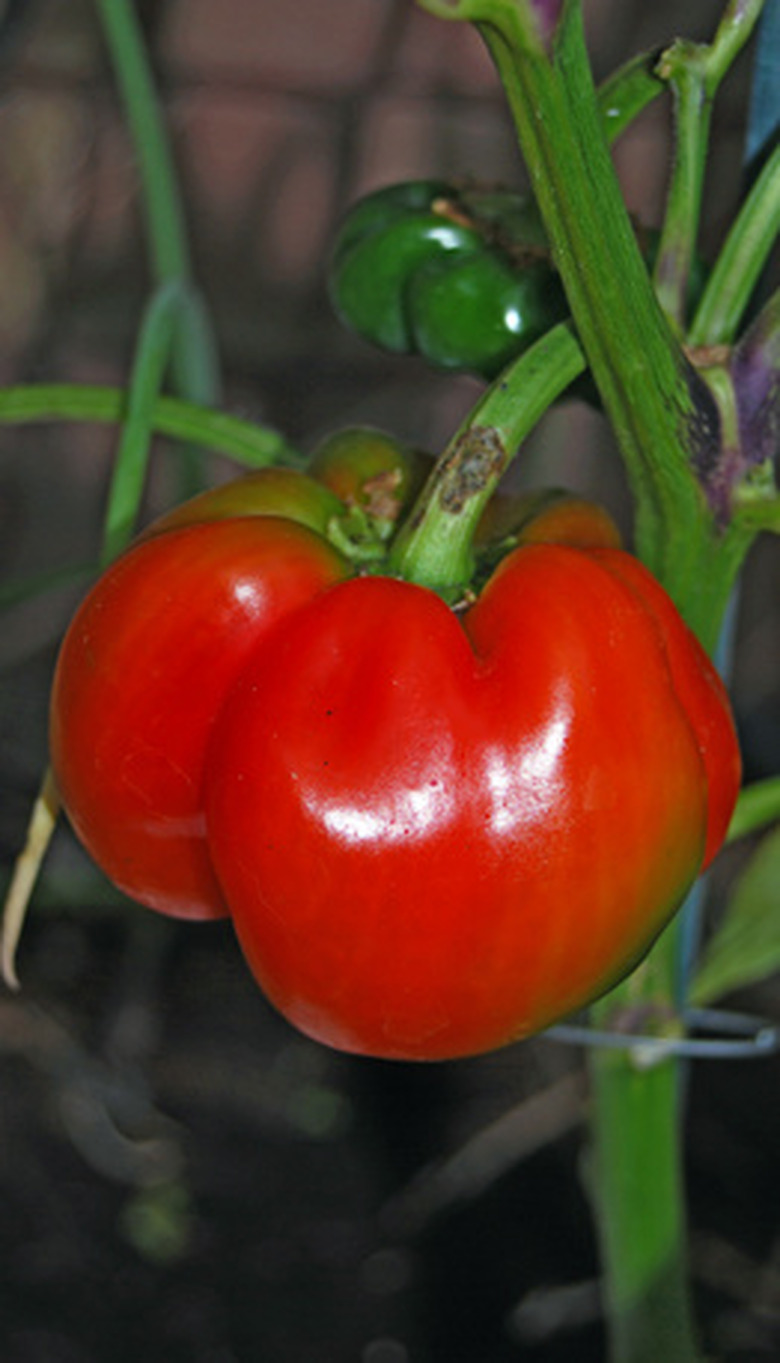Bugs On Bell Pepper Plants
Bell peppers are one of the more popular vegetables grown in backyard gardens. The variety of colors of mature bell peppers, red, green, yellow and orange, appeal to gardeners and consumers alike. Growing bell peppers can present some difficulties, not the least of which is coping with insect problems. Because they are botanically related to tomatoes, potatoes and eggplant, they also share some of the same pest problems.
Types of Bugs
Bell peppers are susceptible to attack from a variety of insects. The most common pests that can infest these plants and their fruits are aphids, thrips, stink bugs, spider mites, cucumber beetles, the European corn borer and pepper maggots. If populations of any of these insects are allowed to increase, the effects on the crop of bell peppers can be devastating.
- Bell peppers are one of the more popular vegetables grown in backyard gardens.
- If populations of any of these insects are allowed to increase, the effects on the crop of bell peppers can be devastating.
Damages
Aphids dwell on the underside of leaves, where they suck out the plant's fluids, weakening the plant. The loss of fluids, and ultimately leaves, leads to poor pepper development and sun scald. Thrips also suck fluids from plants but are not limited to leaves and stem. Thrips also feed on fruit, leaving it scarred and often unmarketable. Stink bugs cause a mechanical injury to seeds and inject the yeast-spot disease organism into the seed and surrounding tissue. Spider mites leave bronze discolorations and cause leaf scorch, which can lead to premature leaf drop and death. Cucumber beetles fed on foliage but more importantly can introduce a bacteria that causes bacterial wilt. The larvae of the European corn borer feed on all tissue above ground, destroying foliage and fruit alike. Pepper maggots bore into peppers near the cap and feed on the inside of the fruit. Fruit becomes more susceptible to rotting.
- Aphids dwell on the underside of leaves, where they suck out the plant's fluids, weakening the plant.
Conditions
Aphids and spider mites prefer warm weather and become more active during its presence, breeding in as little as seven or eight days. Thrips move to well-watered gardens when the late summer heat dries out nearby tall grasses and weeds. Stink bugs become active at temperatures above 70 degrees F and breed every five weeks, making late summer and early fall the times when their populations can cause the most trouble. Cucumber beetles tend to be a springtime problem and overwinter in garden debris and cracks in nearby trees. Corn borers are attracted to tall grasses and corn-like plants and will migrate to other plants such as peppers if their preferred food supply runs low. Pepper maggots feed only on plants in the pepper family which includes eggplant. They are drawn to this type of plant regardless of environmental conditions.
- Aphids and spider mites prefer warm weather and become more active during its presence, breeding in as little as seven or eight days.
- Cucumber beetles tend to be a springtime problem and overwinter in garden debris and cracks in nearby trees.
Treatment
Unless aphid, thrip and spider mite populations become excessive, no treatment is necessary. If aphid populations become problematic, insecticidal soap may be effective. Row covers and hand removal are useful in managing stink bugs and thrips. Insecticides labeled specifically for the remaining insects should be applied according to the manufacturer's directions.
Prevention
Implementing good maintenance practices is the best way to avoid bug problems on bell pepper plants. Remove all debris and damaged or rotting fruit. Weeds should be kept to a minimum. Avoid planting peppers near tall stands of grass or corn. Monitor the plants regularly for signs of insect damage and act quickly to prevent continued infestation. Provide water regularly and mulch to control weeds and retain soil moisture.
- Unless aphid, thrip and spider mite populations become excessive, no treatment is necessary.
- Provide water regularly and mulch to control weeds and retain soil moisture.
